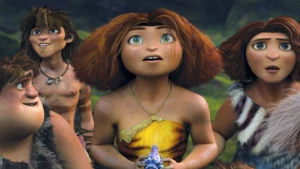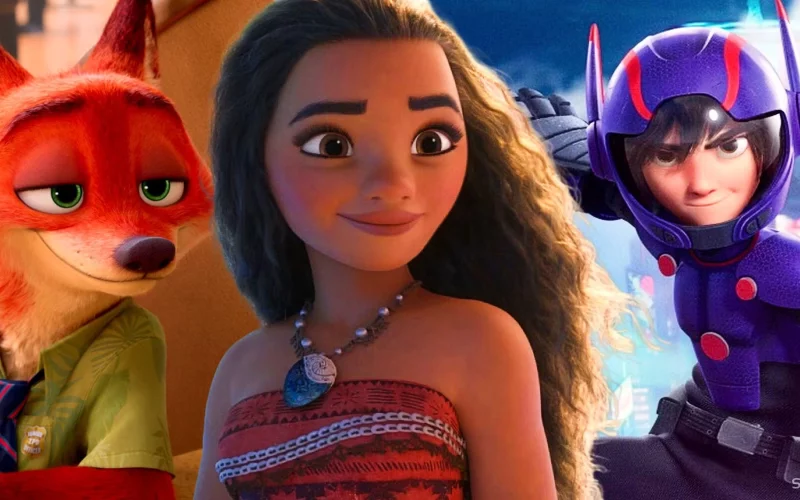Introduction
Representation in kids’ media plays a vital role in shaping the way children view themselves and the world around them. It is not just about portraying diversity but about ensuring that all children, regardless of their race, gender, or background, see characters and stories that reflect their experiences. In this article, we will explore the importance of representation in children’s media, its impact on young minds, and why it matters for their development.
The Power of Media in Childhood Development

From the moment children are born, they begin absorbing information from the world around them. One of the most influential sources of information is the media they consume. Whether through books, television, movies, or digital content, the stories children encounter shape their understanding of society, relationships, and even themselves. Therefore, the media has the power to mold children’s perceptions of identity and belonging.
When children see characters who look like them, speak their language, and share their cultural values, it fosters a sense of self-worth and pride. Conversely, when children are exposed to a lack of representation, it can contribute to feelings of invisibility, confusion, or even inferiority. Representation matters because it provides children with the tools to understand their identity and the world they live in.
Diverse Representation: A Reflection of Society

One of the key reasons why representation matters in kids’ media is that it reflects the diversity of the real world. Society is made up of people from different races, genders, backgrounds, abilities, and cultures. In order for children to navigate the world confidently, they need to see characters in media that reflect the varied experiences of humanity. This means having stories that represent different races, ethnicities, socio-economic backgrounds, family structures, and abilities.
When media reflects this diversity, it helps children realize that everyone’s experiences are valid. It teaches them empathy, acceptance, and understanding of others. For example, a child from a minority background may feel empowered when they see a character of the same race or ethnicity portrayed as a hero, capable, and full of potential. Similarly, a child with a disability may feel validated when they see characters with disabilities depicted in a positive light, demonstrating that they are not defined by their limitations.
Breaking Stereotypes Through Representation

Media plays a significant role in shaping societal norms and breaking harmful stereotypes. Unfortunately, many forms of media have historically relied on clichés and stereotypes to portray certain groups. For example, female characters were often depicted as passive or dependent, while male characters were shown as brave and strong. Similarly, characters from minority groups have sometimes been confined to specific roles, such as the “comic relief” or the “sidekick.”
In recent years, however, there has been a push for more nuanced and varied portrayals of characters. This shift in the media landscape is essential for breaking down stereotypes and showing children that anyone, regardless of their background or gender, can be a hero, a leader, or a pioneer. By creating diverse and multi-dimensional characters, media creators can offer children a broader perspective of what is possible and challenge outdated stereotypes.
The Psychological Impact of Representation on Children

The psychological impact of representation on children cannot be overstated. Kids’ media helps shape the way children view themselves and others. When children see themselves represented in the media, it can enhance their sense of self-esteem and confidence. They begin to internalize positive messages about who they are and what they can achieve.
On the other hand, a lack of representation or negative portrayals can contribute to harmful self-perceptions. Children who do not see themselves represented in media may feel marginalized or excluded, which can affect their emotional and social development. Positive representation in media, therefore, is essential for promoting mental well-being and fostering a sense of inclusion.
Media as a Tool for Promoting Empathy
In addition to boosting self-esteem, representation in kids’ media also plays a crucial role in teaching empathy. By showing a range of experiences and perspectives, children learn to understand and appreciate people who may be different from them. For example, a story about a child from a different cultural background can teach young viewers about that culture, encouraging open-mindedness and acceptance.
Through diverse representation, children are able to develop empathy for others, which is a fundamental skill for building relationships and fostering a harmonious society. Kids’ media has the power to break down walls of misunderstanding and promote a sense of unity among diverse groups of people.
Why Representation in Kids’ Media Still Matters Today

Despite growing awareness of the importance of representation, there is still much work to be done in kids’ media. Many underrepresented groups remain marginalized or stereotypically portrayed. For example, LGBTQ+ characters are still relatively rare in children’s media, and when they do appear, they are often shown in limited or stereotypical ways.
Furthermore, children’s media often focuses on certain types of diversity, such as racial or ethnic representation, but may overlook other important aspects, such as representation of disabilities, neurodivergence, and socioeconomic status. True representation in kids’ media means going beyond tokenism and creating stories that include a wide range of experiences, making sure that all children feel seen and heard.
The Role of Parents and Educators in Media Consumption
While the media industry plays a key role in fostering representation, parents and educators also have an important part to play in guiding children’s media consumption. By actively choosing diverse books, shows, and movies, adults can ensure that children are exposed to a wide variety of characters and stories.
In addition to selecting inclusive content, parents and educators can engage children in discussions about the media they consume. This helps children process what they see and understand the importance of representation in their everyday lives. By fostering critical thinking, adults can empower children to recognize and question stereotypes, while also encouraging them to embrace diversity in all its forms.
Helping Kids Understand Different Cultures

Representation in kids’ media also helps children learn about people from different cultures. Watching characters from other countries or backgrounds allows children to experience different traditions, food, and ways of life.
This is important for teaching kids about diversity and promoting respect for others. The more children are exposed to diverse cultures, the more open-minded and accepting they become. Media can be a fun and engaging way to explore new ideas and ways of life.
Positive Role Models for All Children
A big benefit of representation in kids’ media is providing positive role models for all children. When kids see characters who are kind, brave, smart, and successful, it gives them someone to look up to.
These role models help children understand the values of friendship, kindness, and hard work. It also shows kids that no matter who they are, they can be heroes and leaders. Positive representation helps create a world where all children can dream big and believe in their own abilities.
How Representation Affects Self-Esteem

Children’s self-esteem is deeply influenced by what they see in media. When they don’t see characters who look like them, they may feel left out or less important. This can lead to lower self-confidence.
On the other hand, when kids see diverse and relatable characters, they feel better about themselves. Media that includes a variety of characters allows all children to feel valued and proud of who they are. It helps them develop a strong sense of identity and worth.
Media’s Influence on Social Skills
Kids’ media is also important for teaching social skills. Watching characters interact with others in different situations helps children learn how to deal with emotions, friendships, and problems.
When kids see diverse characters solving problems, being kind, or overcoming challenges, it teaches them how to behave in their own lives. This helps children understand the importance of respect, teamwork, and empathy. It’s a way for kids to learn important life lessons through stories and characters.
The Future of Representation in Kids’ Media

The future of representation in kids’ media looks bright, but there is still a long way to go. As more creators push for diversity, we can expect to see even more characters from different backgrounds. The challenge will be to ensure that representation is done in a way that’s meaningful and accurate. With technology and social change driving new ideas, the future of kids’ media will hopefully be filled with stories that show the full range of human experiences, making all children feel seen and heard.
Conclusion
Representation in kids’ media is more than just a trend it’s a powerful tool for shaping the way children see themselves and the world around them. By seeing diverse characters and stories, children learn to appreciate differences, develop empathy, and build stronger communities. However, challenges remain, and it’s important for everyone – parents, educators, and creators – to keep pushing for even more diverse and accurate representation. As media continues to evolve, the future looks bright for a world where every child can find someone like them on screen, helping to create a more inclusive and understanding society for generations to come.












